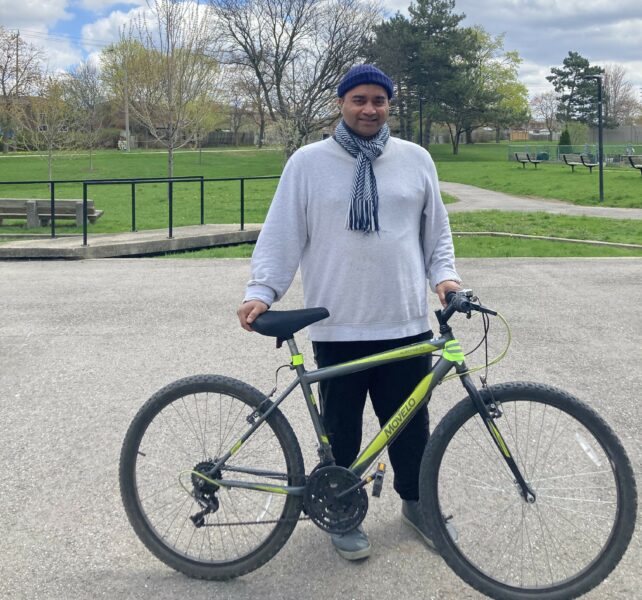Self-Defense Starts with De-Escalation
By Ana Cisneros, DEI Supervisor, Homes First Society

I attended The 519’s Self-Defense Workshop in April hoping to learn at least two moves that I could do with my full self—mind, spirit, and petite body. When I arrived, I met Chris, who was organizing mats and clearing the area for the session. Soon after, his assistant Mags joined us.
I took the opportunity to ask about the work they do and the possibility of Homes First clients and staff participating in future workshops—learning how to defend themselves in potentially dangerous situations.
Please, please! If you have the time, sign up for a free self-defense workshop. You won’t regret it!
What I learned was empowering:
Every part of your body has the potential to defend you. It doesn’t matter if you’re petite—like me—or a larger person. I also learned that your voice, your attitude, your awareness of surroundings, and your ability to disengage are just as crucial as any physical move.
To effectively defend yourself, focus on de-escalation, disengagement, and only use physical defense as a last resort. Your priority should always be to remove yourself from danger.
Here’s what I learned that day:
1. De-Escalate and Disengage
- Avoid escalation:
Maintain distance, plan your escape route, and remove anything that may limit your ability to move, like high heels. - Make yourself a less appealing target:
Staying calm and non-threatening can help avoid provoking an attacker. - Disengage when possible:
Use simple moves to break free and create space. For example, position your hands at your chest in a “prayer” stance—ready to protect your head and body.
2. Learn, Practice, and Review Self-Defense Techniques
- Use your body effectively:
Practice striking with elbows, knees, and feet—powerful tools you already have. - Join a class:
The 519 offers free, professional self-defense workshops for anyone over 18. It’s a great way to build confidence and skills.
3. Know Your Body and Your Environment
- Stay aware:
Always know your surroundings and identify possible exits. - Recognize early warning signs:
If someone seems agitated or angry, try to calmly disengage or seek help. - Use your voice:
Practice staying calm or yelling “HELP” in a clear, commanding voice. Point at specific people and call them in: “You in the red shirt, call 911!”
4. Physical Defense (Only as a Last Resort)
- Strike effectively:
If absolutely necessary, aim for vulnerable areas like the face, throat, or groin.
5. Use Nearby Objects Wisely
- Find tools, not weapons:
Use everyday items—umbrellas, books, a water bottle, your purse—to distract an attacker. - Avoid using phones or keys as weapons:
You may need them to call for help or get into your home. - Only carry a weapon if you’re trained:
Misusing a weapon can increase danger.
6. Stay Calm and Focused
- Practice deep breathing:
Helps you stay composed and think clearly. - Keep your goal in mind:
Prioritize getting to safety, not winning a fight.
7. Seek Help
- Call for help immediately:
Don’t hesitate to reach out to police, security, or bystanders.
8. Trust Your Instincts
If something feels wrong or unsafe—leave. You don’t need to explain or justify your actions. Your safety comes first.
Final Thought:
Whether you’re a staff member or a client, self-defense starts with knowing you have the right to feel safe—and the tools to protect that right. Let’s keep spreading this knowledge and empowering each other.


